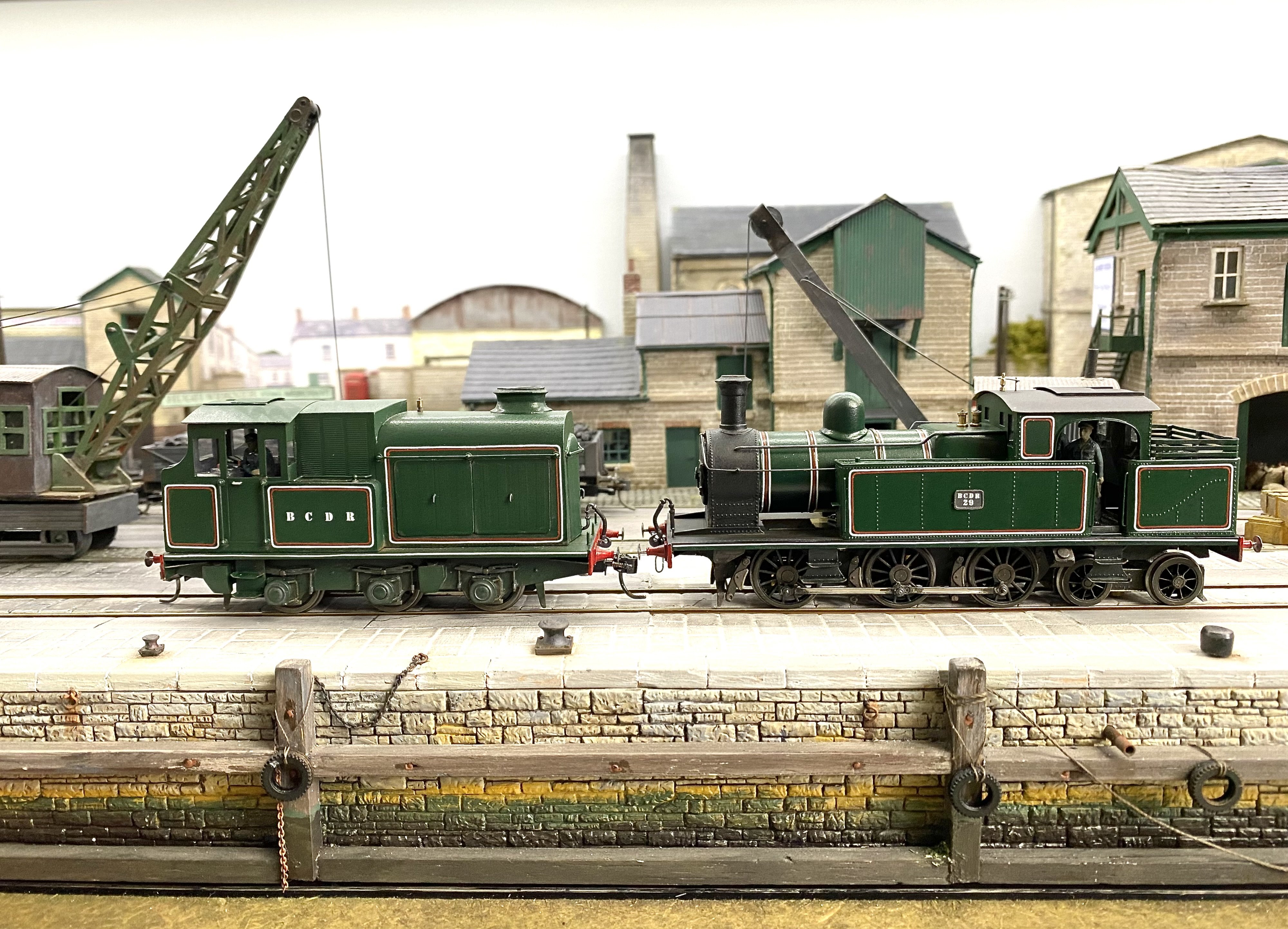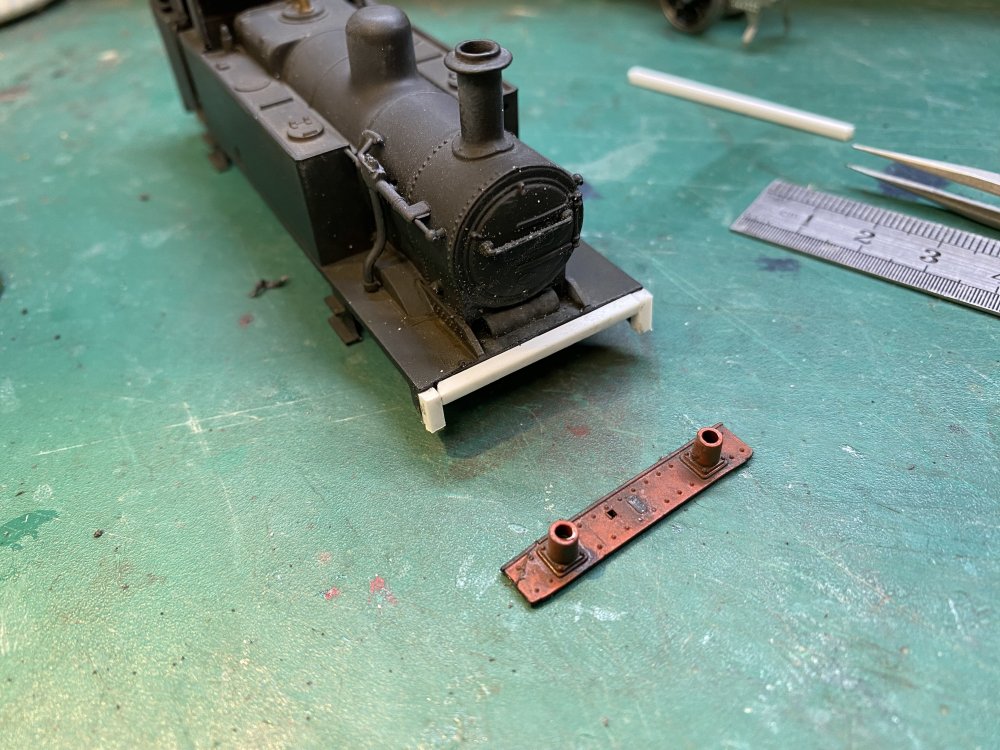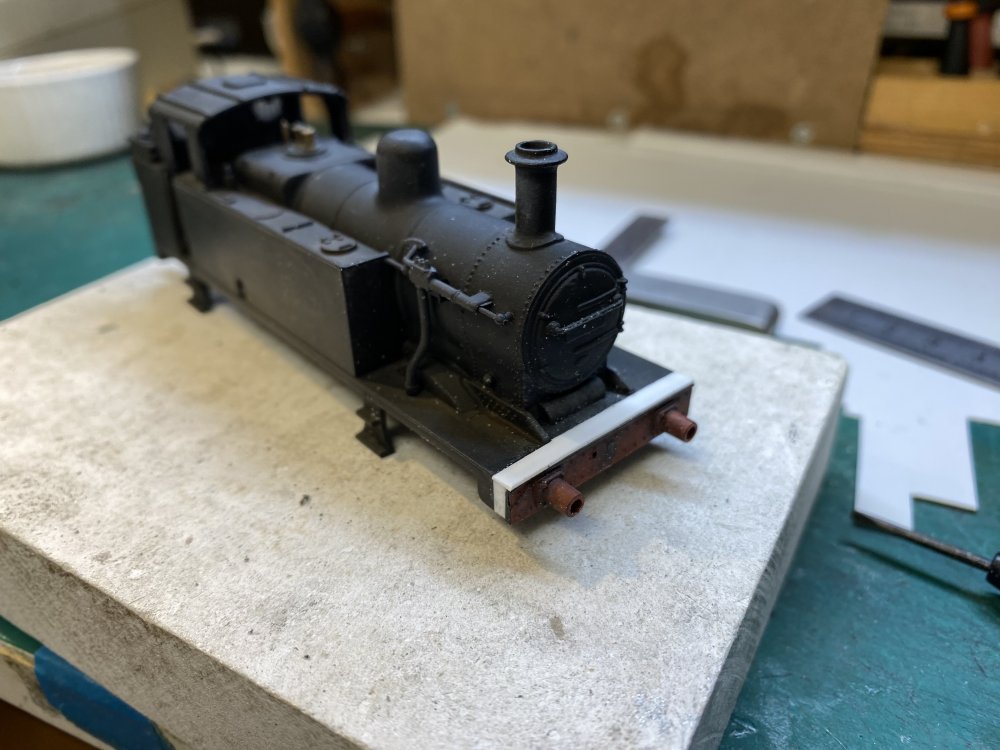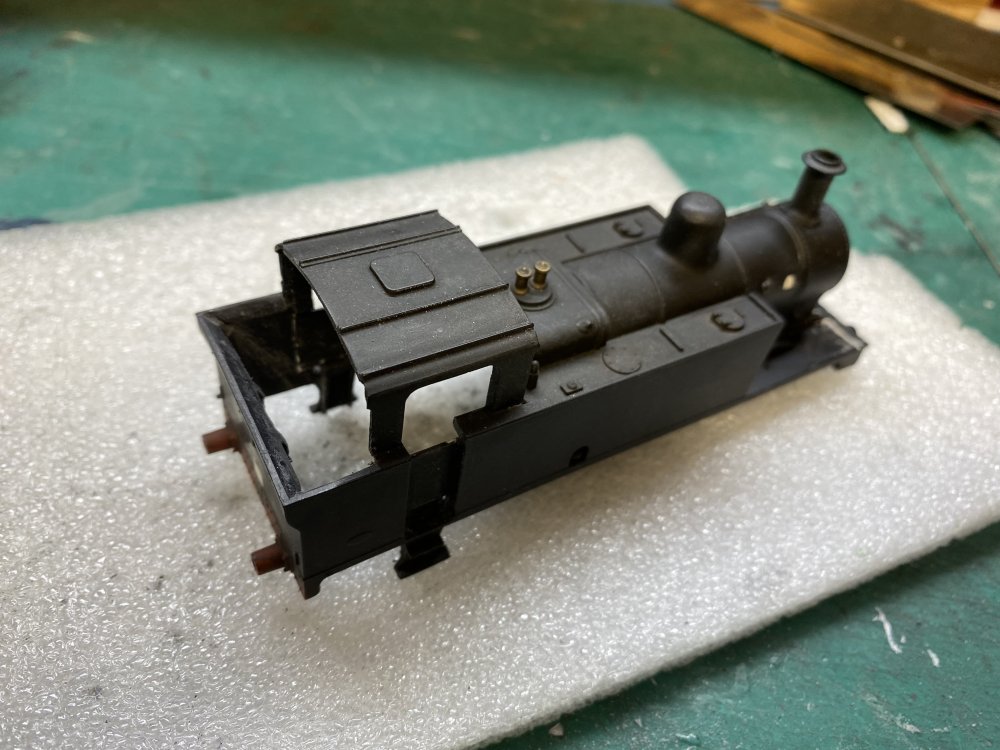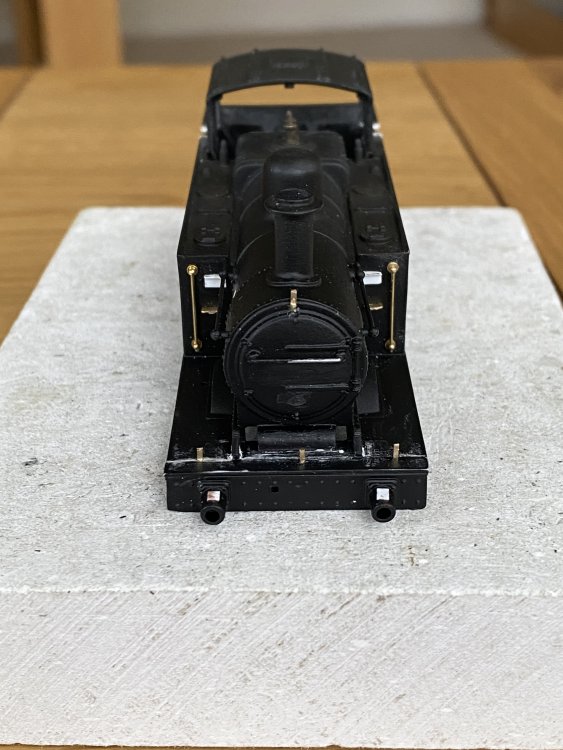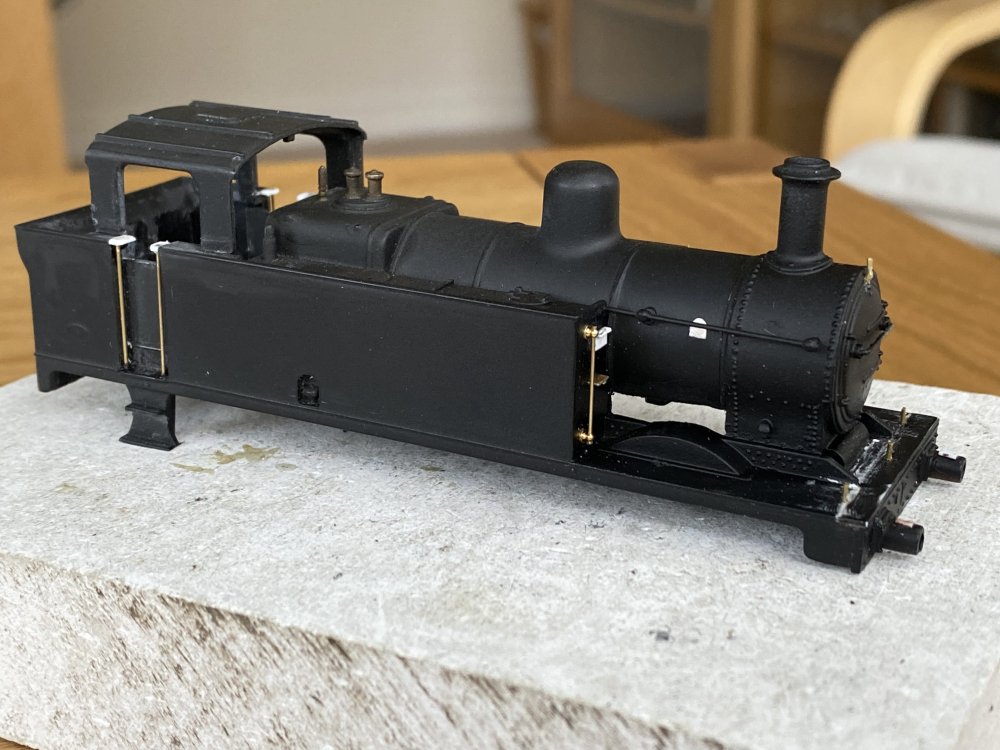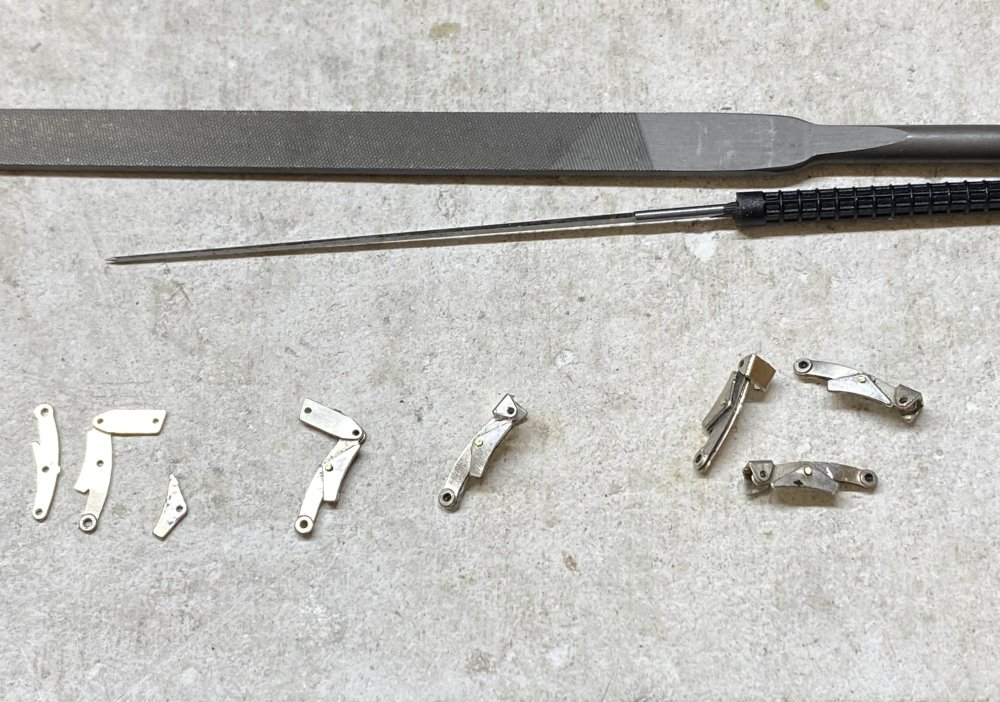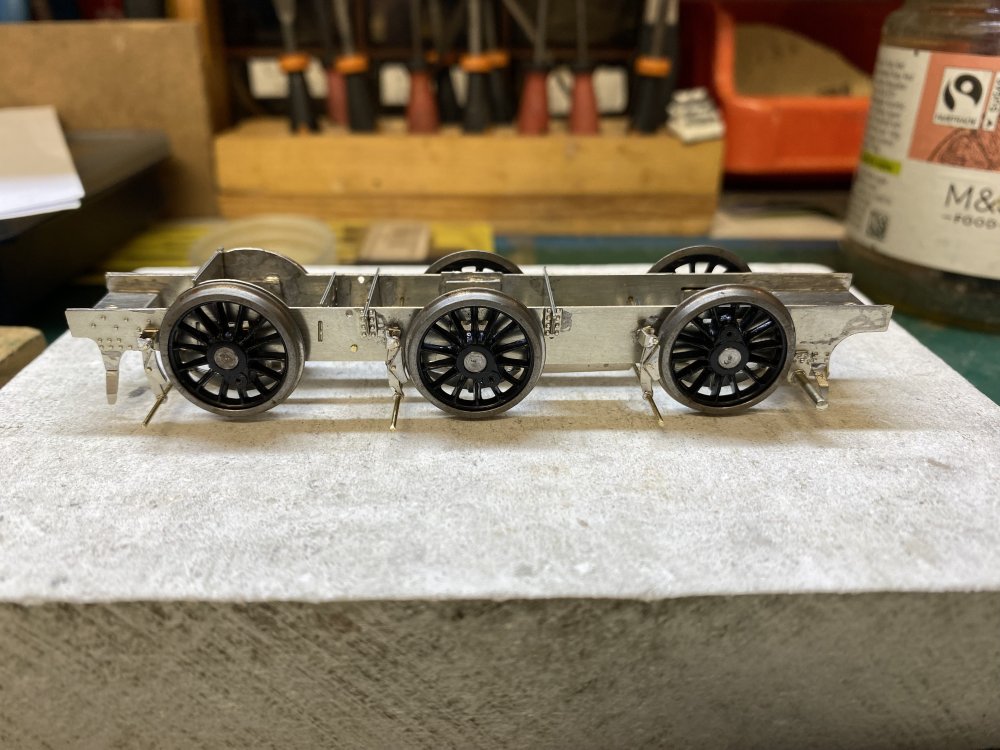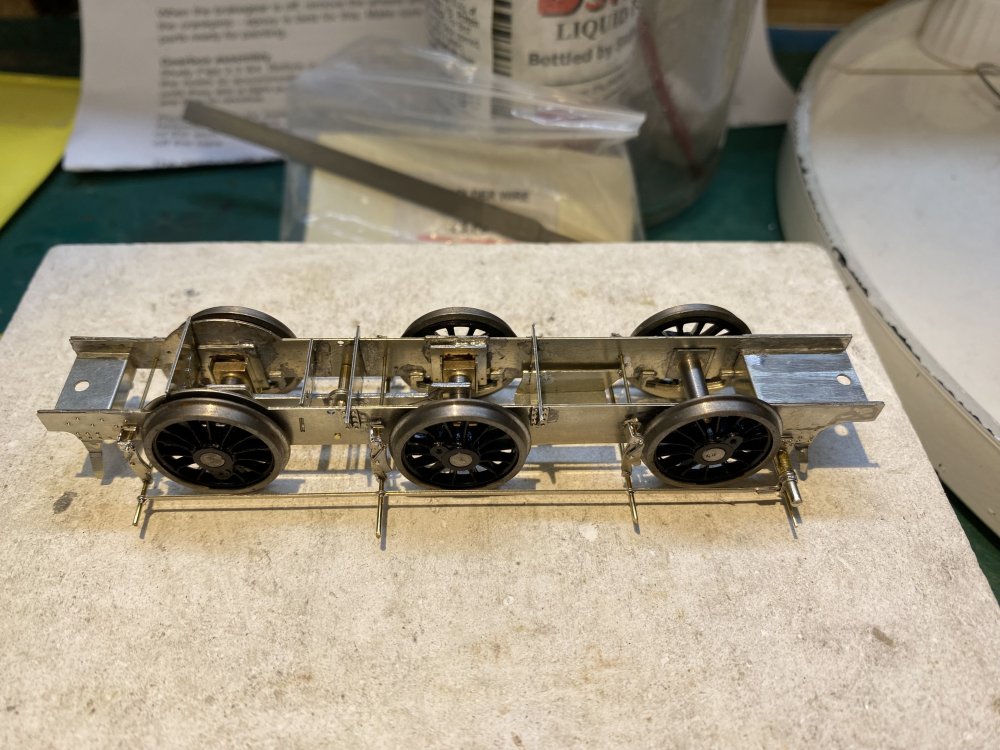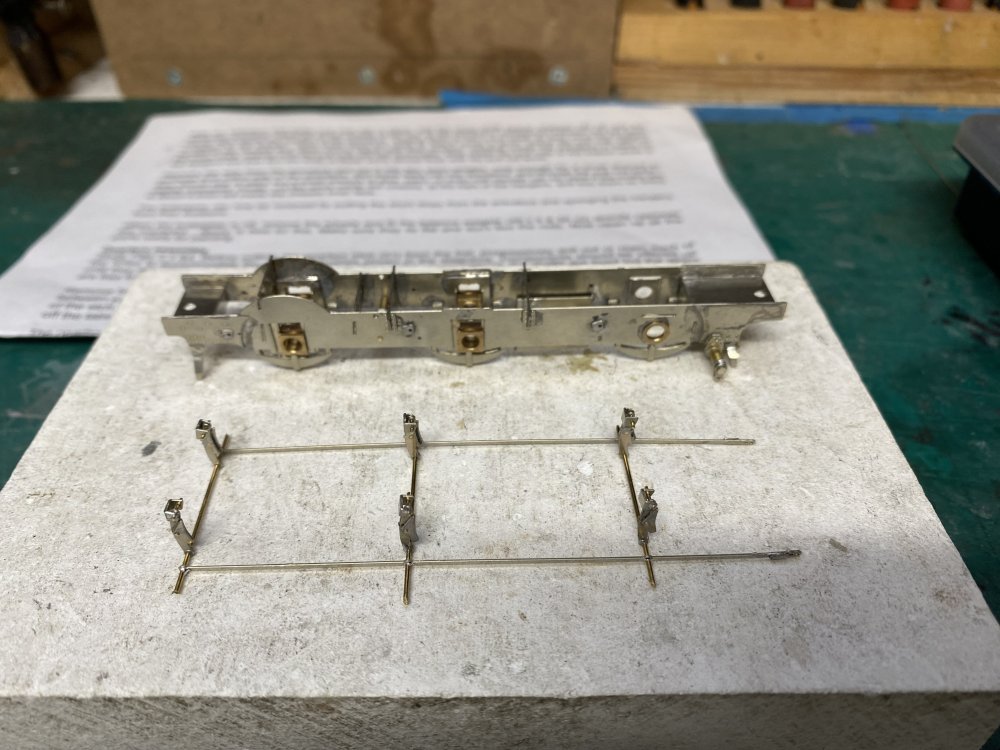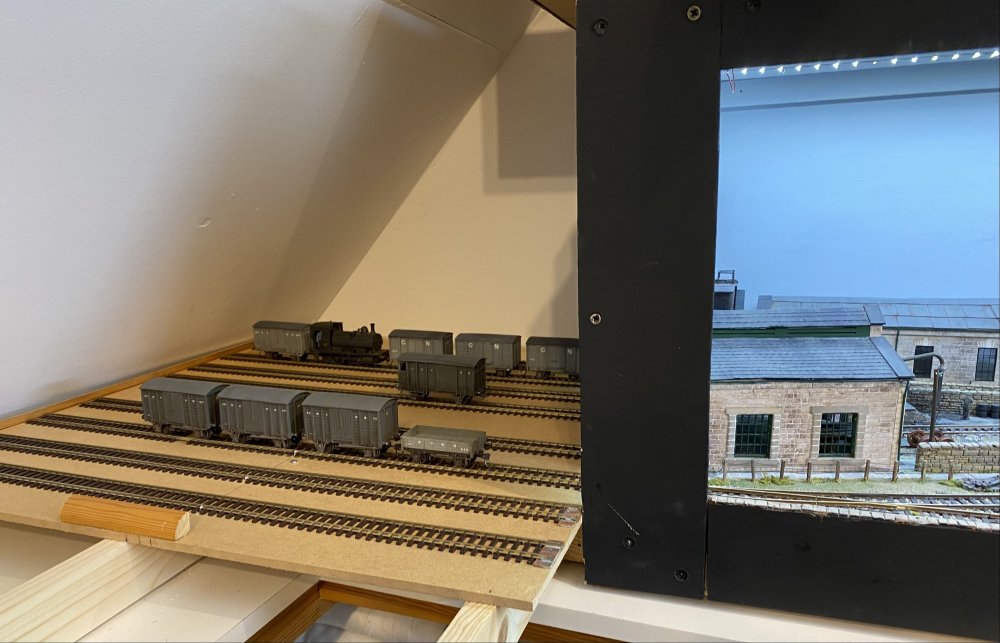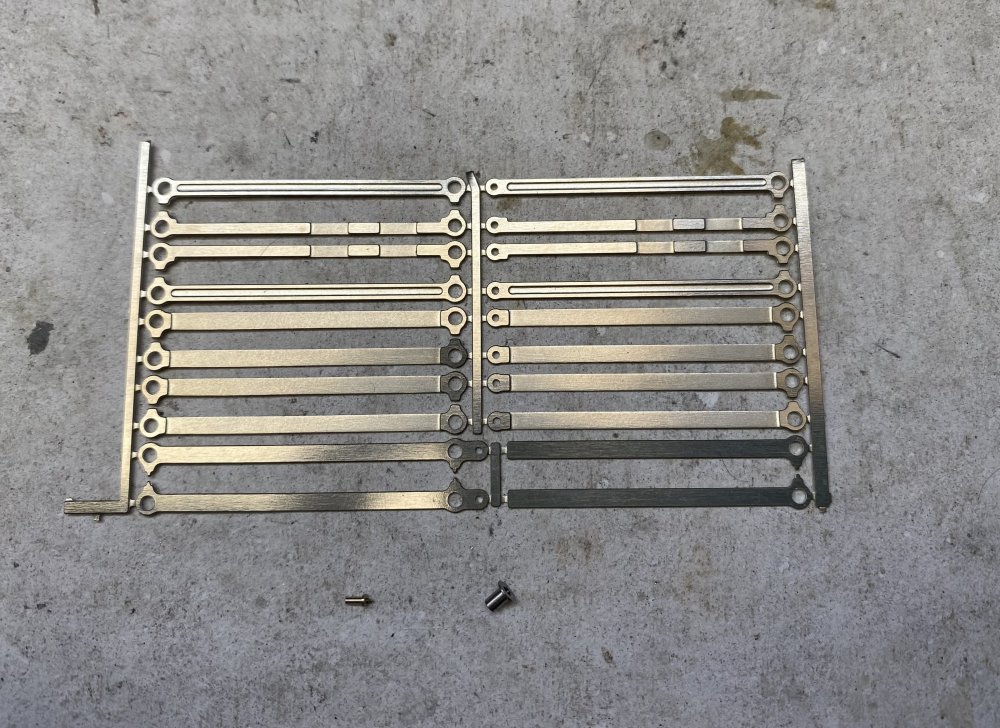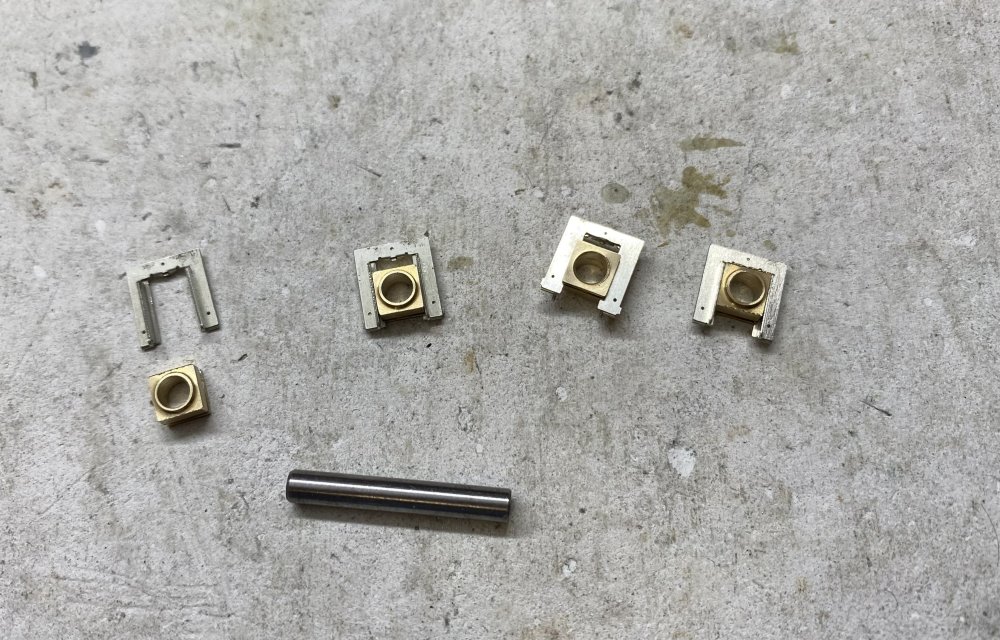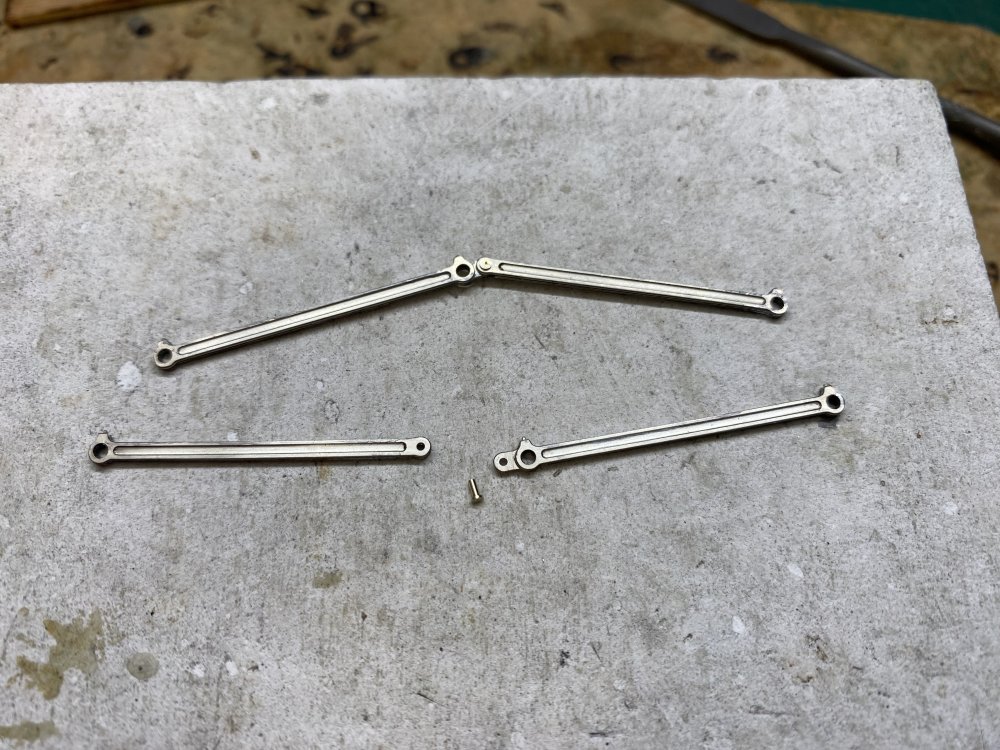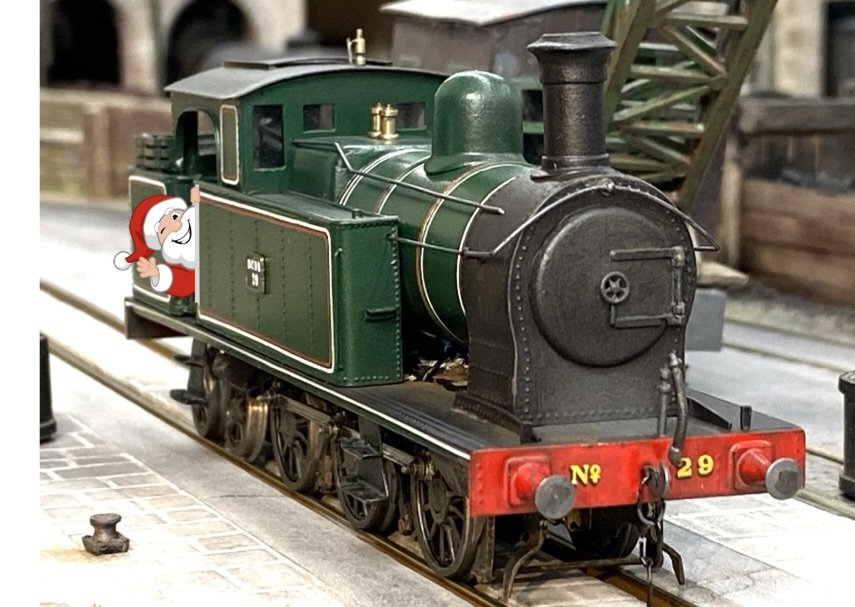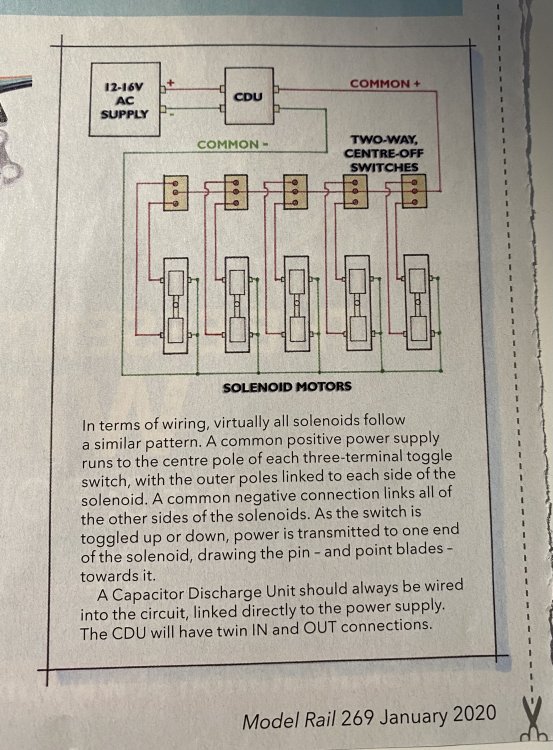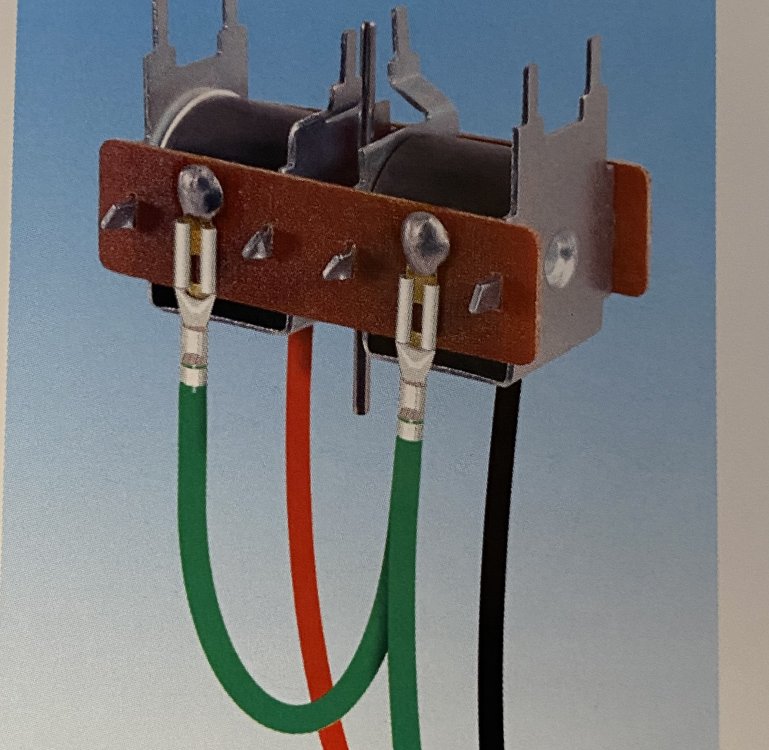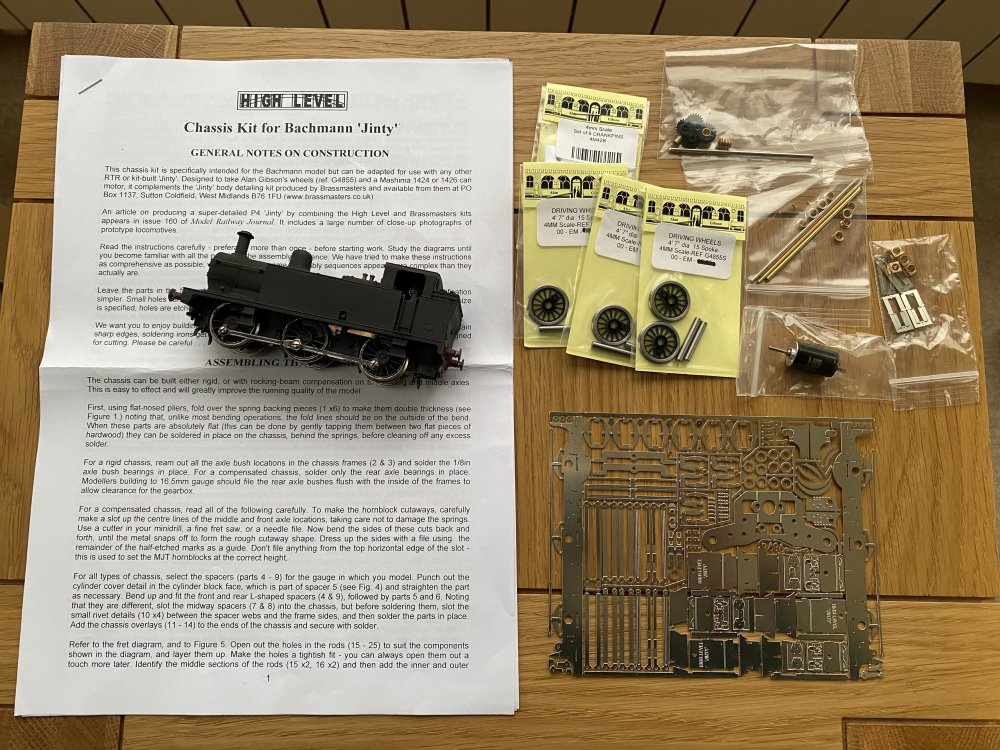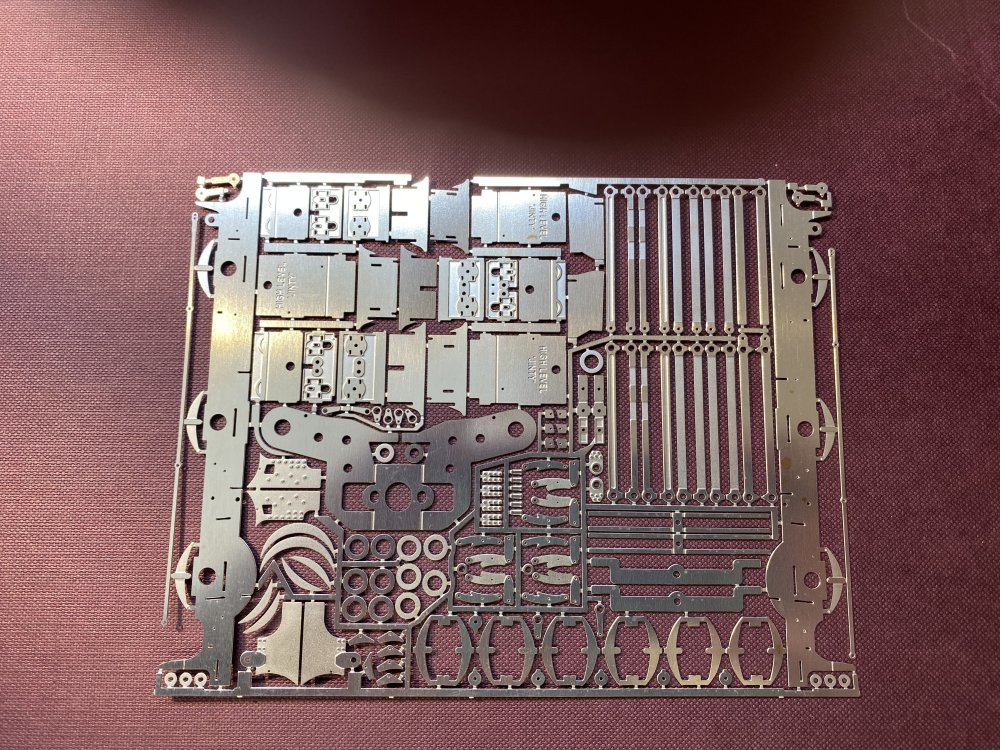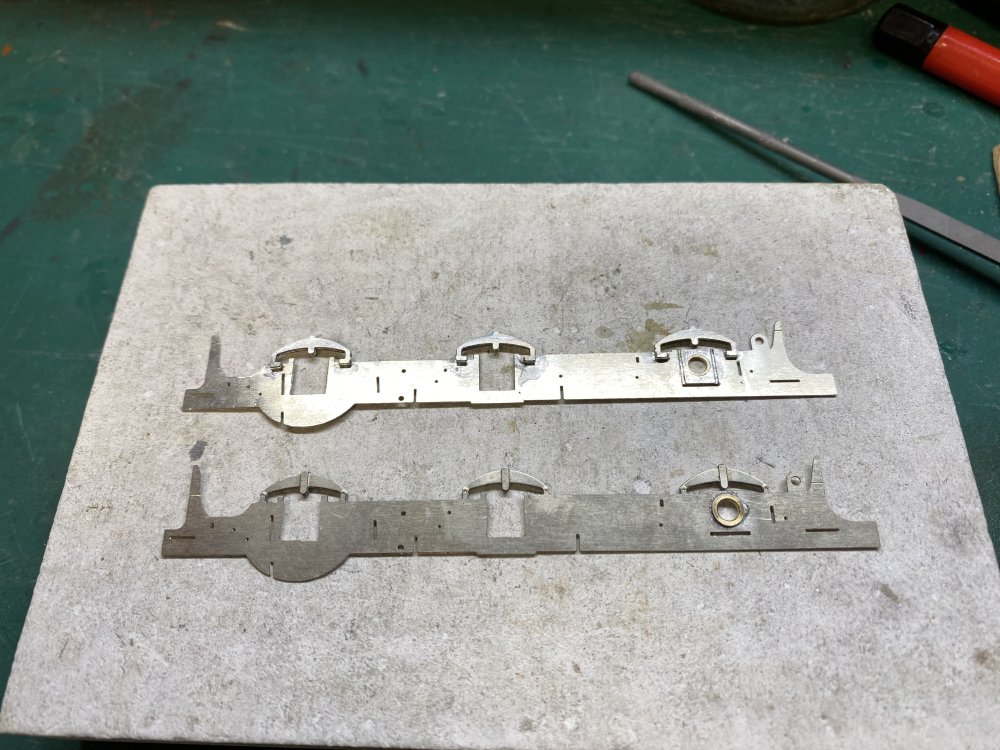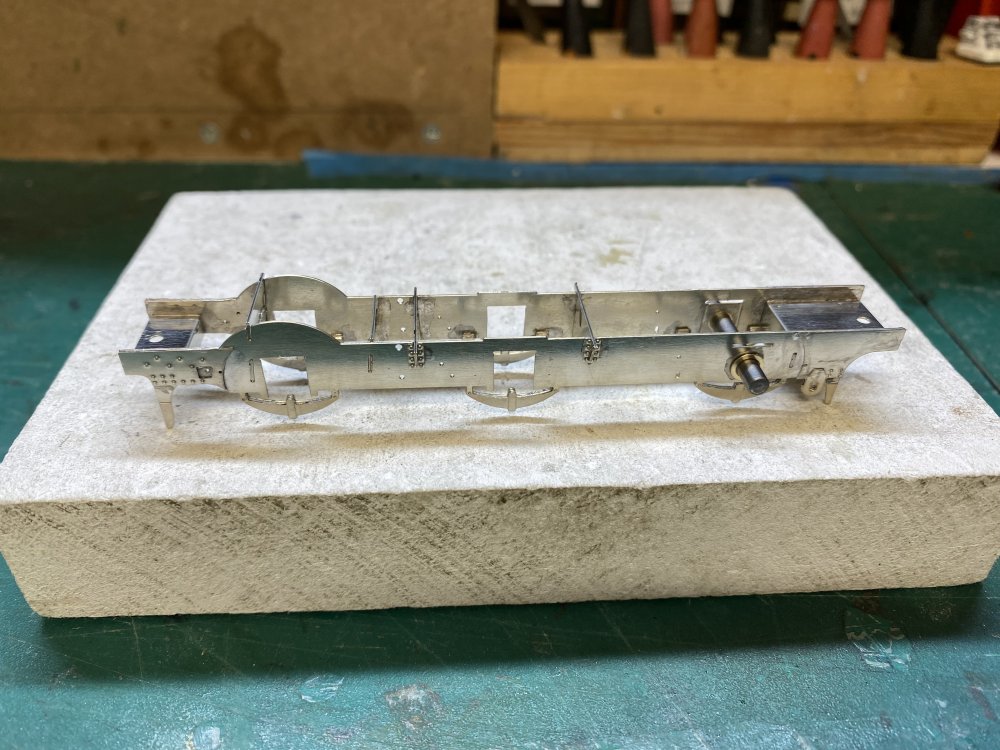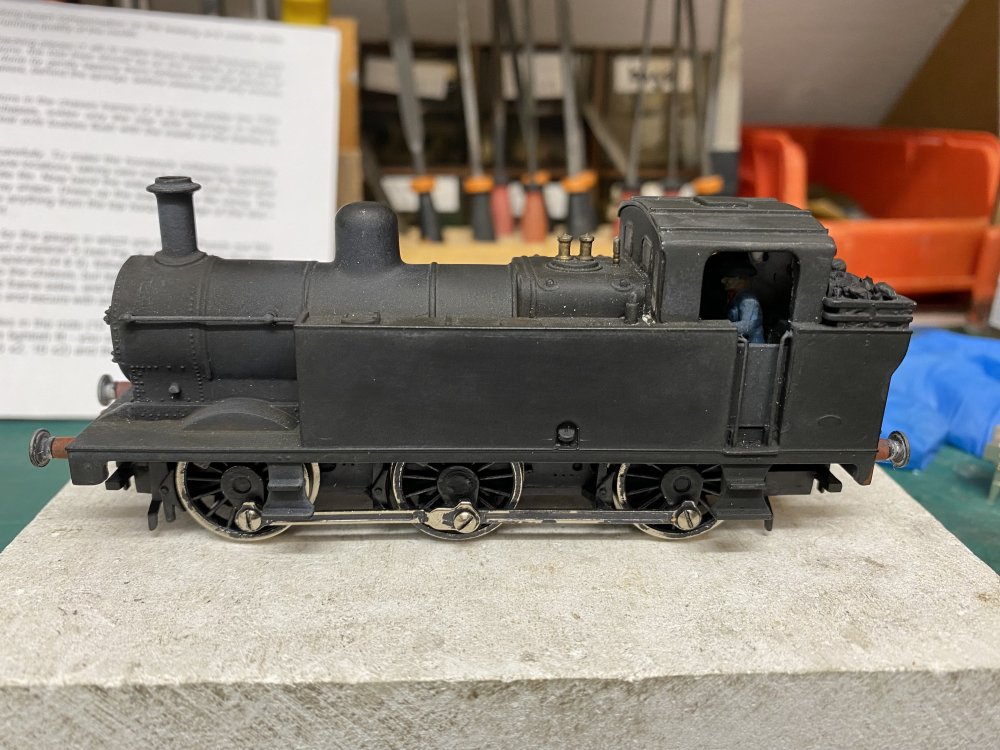-
Posts
956 -
Joined
-
Last visited
-
Days Won
56
Content Type
Profiles
Forums
Events
Gallery
Everything posted by Tullygrainey
-
Yes! Oh yes!
-

Clogherhead - A GNR(I) Seaside Terminus
Tullygrainey replied to Patrick Davey's topic in Irish Model Layouts
It’s all coming to life as the details go in. Great work Patrick -
Lovely stuff. The layout is looking terrific too. I love the shot of A55 entering the cutting. Very convincing with a perfect blending into the backscene.
-
A temporary rest from soldering to offer up chassis to body. Because the High Level chassis is designed for the Bachmann rather than the Hornby model, I expected to have to arrange new chassis mounts. What I hadn't bargained for was the Hornby shell being about 3mm shorter, front to back, than the Bachmann and thus 3mm shorter than the chassis that's meant to go inside it. I didn't really want to carve bits off the chassis so plastic surgery was the better option. Most of the shortfall seemed to be at the front, the running plate being shorter beyond the smokebox door so Hornby Jinty got a nose job. I'm hoping to model No 19 towards the end of its working life around 1962, by which time it was in UTA livery and had shed vacuum gear and coal rails. I've now removed these and added a few extra details. Responding to treatment - the Jinty, not me. Alan
- 645 replies
-
- 10
-

-
A great project and a great result. Really captures the look of the original. I have a fondness for quirky vehicles and this is definitely one!
-
That is truly elegant. Lovely finish on those rods. They look really solid.
-
Hornblocks now in place, aided by a Poppy Woodtech jig. Normally I put two hornblocks onto an axle with a small coil spring trapped between them and then slide the whole thing into place from below, the coil spring helping to trap the hornblocks against the chassis frames. However the etched-on spring detail below each cutout got in the way again and made that impossible so the whole job was a fiddle, compounded by one horn block ( the last one - it's always the last one!) which refused to sit straight and needed to be given a severe talking to. Anyway, job done, I hope. Next, the brakes, prominent members of the Little Things Sent To Try Us Club. Three bits in each one plus a short bit of brass rod to hold them together. However, High Level chassis kits often have a clever arrangement for building the brake rigging which produces a completely detachable rig and if you follow the very detailed instructions (a full A4 page of text) to the letter, it works a treat. The process uses the chassis as a jig with cross rods pushed (but not soldered) through the frames at the top and through the brakes at the bottom. The brakes are then hung on these and soldered to them. The pull rods are then slid onto the bottom cross rods and used to position the brake pads clear of the wheels. Pull rods are then soldered to the bottom cross rods. Finally the top cross rods are cut just inside the chassis frames on each side and the whole brake rig can be unsprung from the chassis and reattached the same way, making painting/future maintenance easier. Fiddly to do but brilliant! (The bottom cross rods still need trimmed back in this pic). Gearbox next Alan
- 645 replies
-
- 13
-

-

-
Terrific work, as always. And a prodigious output this year! Merry Christmas Darius.
-
Hi Tim, Thank you very much for all your praise and positive comments. Much appreciated. Loughan Quay has been a very satisfying layout to construct and I’m pleased that you see things about it that I tried to achieve. You were closer to the truth than you realised when you said the buildings look as if they’ve developed over time. In modelling terms, some of them did. The Townley works has been renovated and extended four times and the original McCaughan Brothers warehouse was demolished and replaced a while ago. Even Hugh Vernor got a replacement coal office after his original corrugated tin affair rusted away. The Mourne mountains have even been moved, though maybe they're just shrouded in mist. (Not sure how that BR pannier tank got here) Loughan Quay now has a new sliding fiddle yard which improves the operating potential a bit - still something of a lash-up but it works well enough. Mr Weaver hasn’t been down this way for a while. I gather he’s casting a critical eye over developments at Clogherhead these days. I’d say you’ll find him in the front pew in St. Mary's Star of the Sea, Clogherhead come Christmas morning. Thanks again. Merry Christmas and best wishes for the New Year. Alan
- 107 replies
-
- 12
-

-

-
Coming together nicely. That's a great solution to the springs problem. Must salt that one away for future reference
-
Today was all about coupling rods. To ream or not to ream? There's no question. All those holes have to be made bigger to fit crankpin bushes or rivets. Each coupling rod is split near the centre crankpin bush and the joint is articulated. Each length of rod is made up from 3 laminations, such that one ends up with a tongue on one end and the other one is forked. To help keep the laminations in line whilst they're sweated together, I use a lightly vaselined crankpin bush through the holes at one end and a cocktail stick through the other end where I apply the soldering iron and work towards the middle. Then I change them over and repeat. To finish, I clamp the rod lengthwise in the vice and run more solder along the top edge. This gets filed back to give a nice solid looking edge. Sometimes. The tongue slots into the fork and the joint is made with a small, nay tiny, rivet which needs to be soldered in place at the back without seizing it all up. Very fiddly and all a bit fraught. Was glad when it was done because it meant I could start breathing again. High Level Hornblocks. Nice design which folds up and doesn't need any soldering but in my experience they need a fair bit of fettling to make them slide smoothly. The sides of the bearings need polished back a bit in order to fit between the cheeks of the hornblocks. Fine emery does the job and I have used Brasso in the past to give them a final shine, always remembering to wash it off afterwards. Next job is to solder the hornblocks into the chassis, using the rods to help position them. Expect tears. Alan
- 645 replies
-
- 10
-

-

-
- 30 replies
-
- 21
-

-
Beehave!
-
Cheers Mike. It's more about replacing things like clunky plastic coal rails and cab steps with finer etched parts but you're right. Over time, they did shed their vacuum gear among other things.
-

Beagnach end: A Branchline terminus.
Tullygrainey replied to Metrovik's topic in Irish Model Layouts
The accessory output on your Gaugemaster Combi is perfect for driving solenoid points motors. -

Beagnach end: A Branchline terminus.
Tullygrainey replied to Metrovik's topic in Irish Model Layouts
The traditional bog standard point motor was/is the Peco PL10 which slots into the bottom of the point with a rod fitting into the hole in the tie bar. it has 2 coils which when given a quick burst of power, move the rod and throw the point. It needs an AC power supply of around 16 volts. Many analogue controllers have an 'accessories' outlet which will do that job. Each points motor needs 3 wires, one feed to each coil (the red and black wires in the pic above) and one common return (the green). The common return can usually be a single wire which daisy chains round the layout from one motor to the next. In the diagram above, each 2-way centre off switch can also be replaced with 2 momentary push buttons - the idea is that the coils just need a brief squirt of power to activate them. Continuous power would burn them out. I find a quick jab on a simple push switch works the best and is fairly intuitive. Thought the blurb above says you need a capacitor discharge unit, you could probably manage without one unless you're trying to throw more than one point at the same time. Advantages: Relatively cheap and cheerful. Peco can supply wire harnesses which slip onto the terminals thus avoiding the need to solder the wires on. Disadvantages: Each motor needs wired back to the control panel where you've sited your operating switches. However, your layout is small so that shouldn't be a big problem. The action is sudden, rapid and noisy, not slow and progressive like when using servos or similar. If using electrofrog points, a switch needs to be added to change the frog polarity as the point change over. (You're using insulfrog points so not a problem) Good luck with your build! Alan -
Yay!! Perfect pebbledash
-
The recent announcement by Marks Models and Hornby of an intention to produce a model of the ‘Irish’ Jinty prompted me to rummage in my future projects drawer for an old, much abused Hornby Jinty and an etched Jinty chassis kit from High Level, both of which have been in there for a while, originally acquired to build that very thing - an Irish Jinty, either in NCC or UTA livery. Time to dust them off.... The chassis kit is intended for the Bachmann model but I'm hoping the Hornby shell can be persuaded to fit. It's fairly basic compared to the more recent Bachmann but would probably repay a bit of work. Brassmasters do a nice detailing kit for it. The High Level chassis etch is a work of art and a thing of beauty - crisp and detailed in nickel silver. It almost seemed a crime to plaster it with solder and fingerprints. But, hey ho, eggs and omelettes. Off we go. Fixed bearings for the rear driven axle and compensation for the other two using hornblocks. The spring detail is made up of two additional layers laminated to the back of the one etched as part of the chassis frame. Their presence made removing the hornblock cutouts a bit tricky. Nearly managed to fold one of the frames in half... but once all the spacers were in, the whole thing became reassuringly rigid. And straight. There's a lot to be said for photo-etching. York Road, here we come. Alan
- 645 replies
-
- 19
-

-

-
As you say David, a shedload of variables all waiting to trip you up so no mean achievement to get it working so well. A fine bit of work!
-

Beagnach end: A Branchline terminus.
Tullygrainey replied to Metrovik's topic in Irish Model Layouts
Great start. Looking forward to seeing this develop. Keep posting! -
Beano is right. If you don’t need sound, any generic decoder will do the job as long as it has the correct number of pins to match the socket in your loco. Have a look at the DCC Concepts website. They have a useful range of decoders and also a plug-in stay-alive system which avoids the need to do any soldering (though you may not need stay-alive, given the sort of locomotives you’re using). I’ve been using them for a while now with no problems.
-

Brookhall Mill - A GNR(I) Micro Layout
Tullygrainey replied to Patrick Davey's topic in Irish Model Layouts
Apologies, it's probably me causing some of the confusion here. The carriage, a Brake 3rd, currently parked at Brookhall Mill (possibly full of drunk passengers) was built from a Bill Bedford etch that had lurked in Patrick's projects drawer for about 10 years. The same kits are now rebranded as Mousa Models products and available from them. Wizard Models do seem to stock some Bedford etches, mostly detailing stuff like brake levers and W irons, but not the Mousa carriages. None of those detailing bits appear on the Mousa site so could they be older remaindered stock? PS: Just checked the Wizard site again and I notice most of the Bedford items are 'out of stock' which does seem to suggest a product line being run down -

Brookhall Mill - A GNR(I) Micro Layout
Tullygrainey replied to Patrick Davey's topic in Irish Model Layouts
No, JB, it’s made from a Bill Bedford etch -
Just brilliant!
.png.c363cdf5c3fb7955cd92a55eb6dbbae0.png)
